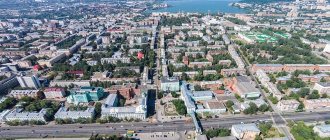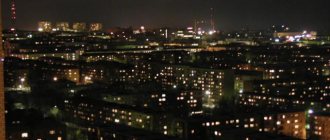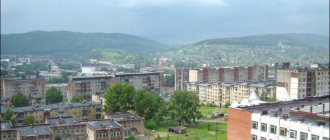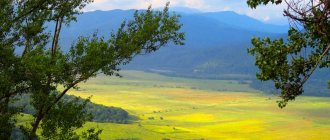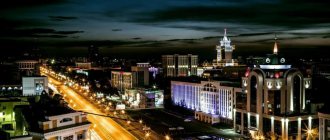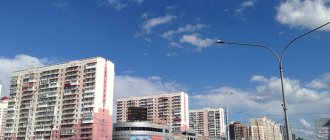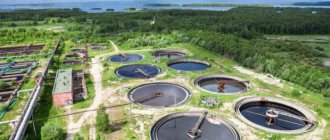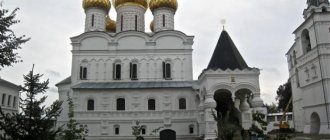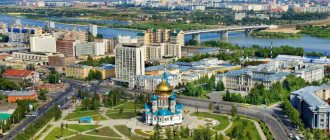Historical information
In Russian chronicles, the settlement has been mentioned since 1469 in connection with the campaign of governor Ivan Runa to Kazan. However, settlements appeared here much earlier, as evidenced by numerous archaeological excavations. Despite some historical facts, 1469 is considered to be the year the city was founded.
The population of Cheboksary began to increase significantly after the 1917 Revolution. New educational institutions and factories began to appear in the city. All this could not help but attract people from neighboring settlements. The birth rate has also increased. Modern Cheboksary is a city that is developing rapidly. The population continues to increase today.
Crime
It’s strange, but Cheboksary has always been a fairly calm city. Yes, of course, there is robbery and murder, but they are usually of a purely domestic nature. Drunken kitchen quarrels and fights can end disastrously. But there is no rampant crime in the city. Such a popular system of the 90s as “protection protection” for businesses was practically absent in the city. The capital of Chuvashia lived peacefully and calmly. Well, of course, “district-to-district” showdowns were popular among the younger generation, when crowds of hundreds flocked to a meeting somewhere. However, there were always no deaths. Fights, yes, but not to the death. They were probably afraid. The townspeople have always had a strong belief that the police bravely protect the peace and well-being of people. Maybe because every 10th resident of Cheboksary was involved in law enforcement agencies. The statistics remain to this day.
What our wonderful city has become famous for is its regular economic criminal cases against the heads of large enterprises, plants and factories. Moreover, they were initiated by the former head of the republic, the former Minister of Justice of the Russian Federation. Cases were opened against almost each of the leaders, some were imprisoned, others had already been released. It all started with attempts to declare the privatization of enterprises illegal, then, according to a well-established scheme, the organization was seized, an external manager was appointed, assets were withdrawn and the vacated land and buildings were sold. The very first high-profile case was the collapse of KhBK. And then came the resale of the remaining enterprises. And so, the city is calm, in the evenings there are police patrols, even without dogs, and you won’t even hear the rustle of a flying bullet. Boring, quiet, splendid.
Physiographic indicators
It is no coincidence that the first settlements appeared near the modern city of Cheboksary. The city is located on the Volga Upland, in close proximity to the Volga River reservoir. The total length of the city's borders exceeds 80 kilometers. The total area of the settlement is 233 square meters. km. 24% belongs to the forest fund. The environmental situation in Cheboksary is considered satisfactory. And this is another factor in the rapid population growth.
The city's topography is characterized by the presence of a large number of ravines. The height above sea level varies from 50 to 20 meters. Several rivers flow through the city. In this regard, there are several bridges in the village.
Cheboksary is characterized by a temperate continental climate. Winter here is usually long (more than four months). From December to January, snowy and frosty weather prevails. The summer months are not characterized by abnormally high temperatures. August is the hottest. At this time, the air temperature can rise to 35 degrees Celsius.
Climate
The climate in the region is continental (Köppen: Dfb), and it is similar to the climate in Moscow, although the winter is colder, which lasts from late November to late March with constant snow cover.
| Climate data for Cheboksary, 1981–2010 normal, extremes 1929–present. | |||||||||||||
| Month | Jan | Feb | Mar | Apr | May | Jun | Jul | Aug | Sep | October | But I | December | Year |
| Record high °C (°F) | 4.7 (40.5) | 5.0 (41.0) | 13.5 (56.3) | 28.6 (83.5) | 32.6 (90.7) | 36.4 (97.5) | 38.6 (101.5) | 39.9 (103.8) | 29.7 (85.5) | 25.0 (77.0) | 13.4 (56.1) | 7.0 (44.6) | 39.9 (103.8) |
| Average high °C (°F) | −7.0 (19.4) | −7.3 (18.9) | −0.5 (31.1) | 9.6 (49.3) | 17.9 (64.2) | 22.3 (72.1) | 25.0 (77.0) | 22.2 (72.0) | 15.9 (60.6) | 7.7 (45.9) | −0.4 (31.3) | −5.8 (21.6) | 8.3 (46.9) |
| Daily average °C (°F) | −10.2 (13.6) | −10.1 (13.8) | −4.1 (24.6) | 5.2 (41.4) | 12.9 (55.2) | 17.5 (63.5) | 19.7 (67.5) | 17.1 (62.8) | 11.1 (52.0) | 4.4 (39.9) | −3.7 (25.3) | −8.5 (16.7) | 4.3 (39.7) |
| Average low °C (°F) | −12.7 (9.1) | −13.2 (8.2) | −7.3 (18.9) | 1.4 (34.5) | 7.8 (46.0) | 12.9 (55.2) | 15.8 (60.4) | 13.2 (55.8) | 8.2 (46.8) | 2.1 (35.8) | −4.5 (23.9) | −10.6 (12.9) | 1.1 (34.0) |
| Record low °C (°F) | −42.3 (−44.1) | −42.2 (−44.0) | −32.5 (−26.5) | −21.4 (−6.5) | −5.1 (22.8) | −4.8 (23.4) | 1.7 (35.1) | −1.5 (29.3) | −7.5 (18.5) | −15.3 (4.5) | −29.9 (−21.8) | −44.3 (−47.7) | −44.3 (−47.7) |
| Average precipitation mm (inches) | 31 (1.2) | 22 (0.9) | 27 (1.1) | 31 (1.2) | 39 (1.5) | 61 (2.4) | 60 (2.4) | 55 (2.2) | 52 (2.0) | 55 (2.2) | 44 (1.7) | 34 (1.3) | 511 (20.1) |
| Average rainy days | 2 | 0 | 3 | 10 | 16 | 15 | 13 | 12 | 20 | 15 | 11 | 10 | 127 |
| Average snow days | 25 | 16 | 16 | 4 | 0 | 0 | 0 | 0 | 0 | 7 | 14 | 23 | 105 |
| Average relative humidity (%) | 85 | 80 | 79 | 58 | 56 | 59 | 52 | 62 | 74 | 79 | 87 | 86 | 71 |
| Source: Weather and Climate[19] | |||||||||||||
Population
As of 2022, the population in Cheboksary is 489,498 people. According to this indicator, the city is in 38th place in Russia. However, such a number of people did not always live in the settlement. Rapid growth has been observed since 1917. According to data for 1913, only 6,700 people lived in the settlement. Already in 1926 the figure increased to 9 thousand people. A real demographic boom was observed from 1959 to 1967. During this time, the population growth amounted to about 100 thousand people. The number of people living in the city continues to increase today. The birth rate significantly exceeds the death rate.
The national composition of Cheboksary deserves special attention. More than half of the population are Chuvash (about 62%). The Russians are in second place. In addition, Ukrainians, Poles, Germans, Tatars, Gypsies, Belarusians, etc. live in the city.
Administrative structure and authorities
The city includes three administrative districts - Moskovsky, Leninsky and Kalininsky. The population of Cheboksary cannot be considered without taking into account the administrative features of the city. The largest is the Moskovsky district. More than 200 thousand people live here. It is here that the largest industrial enterprises are concentrated, so the environmental situation is not the best. Kalininsky district covers the eastern part of the city. About 156 thousand people live here. The area is characterized by well-developed infrastructure. The Leninsky district is the smallest in terms of population. 134 thousand people live here.
The head of executive power in Cheboksary is the mayor. He is elected in municipal elections. Another important formation of city government is the city meeting of deputies. It is this body that regulates the economy of Cheboksary. In addition, decisions regarding the education and health of the local population are made at the meeting.
What is Shupashkar?
It turns out that the Chuvash themselves call Cheboksary by this name. By the way, there are two official languages in Chuvashia: Chuvash and Russian.
Translated from Chuvash into Russian, it means “wooden gutter.” True, as to why such a name arose and what was the reason, the opinion of the local population differs. However, it agrees that this chute is from a water mill. Just which one: the one through which water flows, or the one through which flour is poured?
However, there are more scientific explanations for the meaning of the word “shupashkar”. One of them is “a Chuvash settlement” (from “Chepe Suar”), the second is “fenced by water.” Indeed, in ancient times the city was completely surrounded by water. On one side - the Volga, on two sides - the Cheboksary River, in those days a high-water river, on the fourth side the city was protected by a wide ditch, also filled with water.
Economy and industry
The city's economy is rapidly developing due to the presence of a large number of large industrial complexes. Much attention is also paid to trade and services.
A lot of good reviews can be heard about the Cheboksary Industrial Tractor Plant, which began its work in 1972. Today the plant is one of the largest industrial complexes in the world engaged in the production of bulldozer equipment. Most of the products are exported. The Cheboksary Hardware Plant, as well as the Electrical Instruments Plant, also operate in the field of mechanical engineering.
It is no coincidence that Cheboksary is developing. Huge attention is paid to industry. In the village there is a hosiery and knitting factory, a cotton mill, and a ribbon weaving factory. There are also many achievements in the food industry. The products of the Cheboksary confectionery factory "Accord" are known throughout Russia. The establishment has been delighting with its delicious products since 1943. There is also a pasta factory and a distillery in Cheboksary.
Transport
The population of Cheboksary is considerable. It is no coincidence that the transport sector is well developed here. There is a river port, a railway station, and an airport. From the locality you can reach many Russian cities without transfers. The road network is also well developed here. More than 80% of all cargo transportation is carried out by road transport.
There is a high-quality railway connection from Cheboksary to Moscow. Walks on a regular basis.
Urban transport is also well developed in the village. The Cheboksary trolleybus first began operating in 1964. Then transport ran from the railway station to the city's Red Square. There are now more than 20 routes. The fare is 18 rubles. There are also regular buses and minibuses in the city.
Education
There are more than 30 general education institutions in the city, and many public and private kindergartens. The problem of placing a child in a preschool institution is not acute in most families. However, in order to get into a specific kindergarten, you must join the electronic queue.
Great attention is paid to the employment of the population of Cheboksary. It is no coincidence that the administration fully supports higher educational institutions, where students are trained in various professional areas.
A lot of good reviews can be heard about the Chuvash State Institute of Culture and Arts. This budget educational institution was founded in Cheboksary in 2000. Nowadays, guys who want to become directors, actors, vocalists, choir directors, etc. can undergo training here.
Chuvash State Pedagogical University produces professionals in the educational field. The institution was founded in 1930. Not only children from Cheboksary, but also residents of neighboring regions are trained here.
Culture Cheboksary
The city has many interesting attractions. Tourists should definitely visit the Chuvash National Museum. This cultural and educational institution was founded in 1920. The following collections were formed in the museum: archaeological, botanical, documentary, ethnographic, etc. From the exhibitions you can learn how the city developed over the years.
The Chuvash Art Museum may also be of interest to tourists. Here are the works of local artists who lived in the city during different periods. It is also recommended to visit: the Museum of Chuvash Embroidery, the Literary Museum named after K. V. Ivanov, the Chuvash State Opera and Ballet Theater, and the State Philharmonic.
The symbol of the city
In 2003, a 46-meter sculpture of the Patron Mother was erected on a hill next to the Historical Embankment of the Cheboksary Bay. On a granite pedestal stands the figure of a woman in Chuvash national clothing. The woman has her arms outstretched, she is ready to hospitably welcome everyone here. This gesture also symbolizes patronage of people and the city. At the bottom of the monument there is an inscription in Russian and Chuvash languages, it calls people to peace and love.
The monument to the Patron Mother has become a symbol of the city of Cheboksary. What an area of indescribable beauty is visible when you climb up to the monument! After all, he stands on a hill. The bay, the Volga, awash of churches, fountains, green parks...


